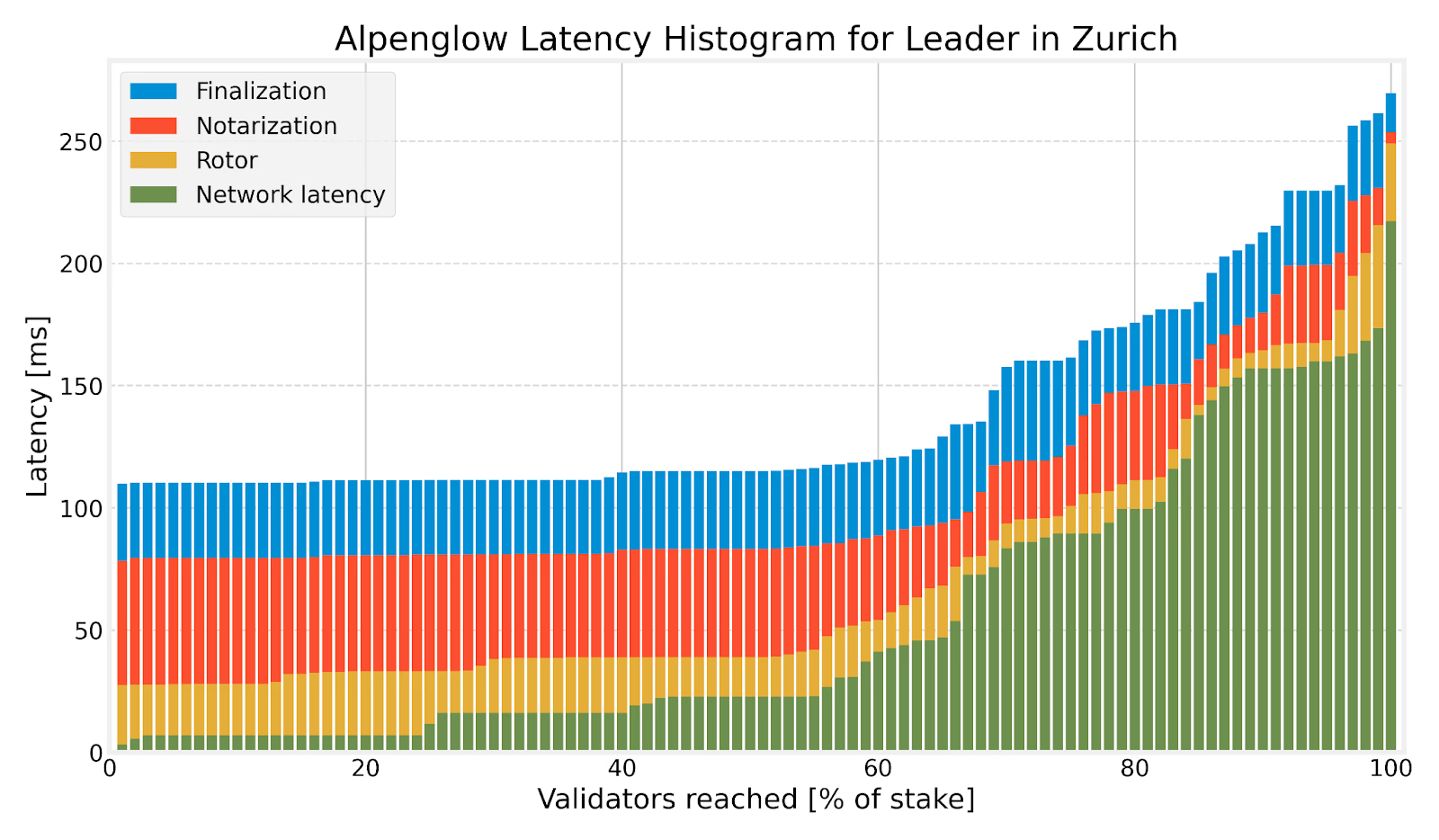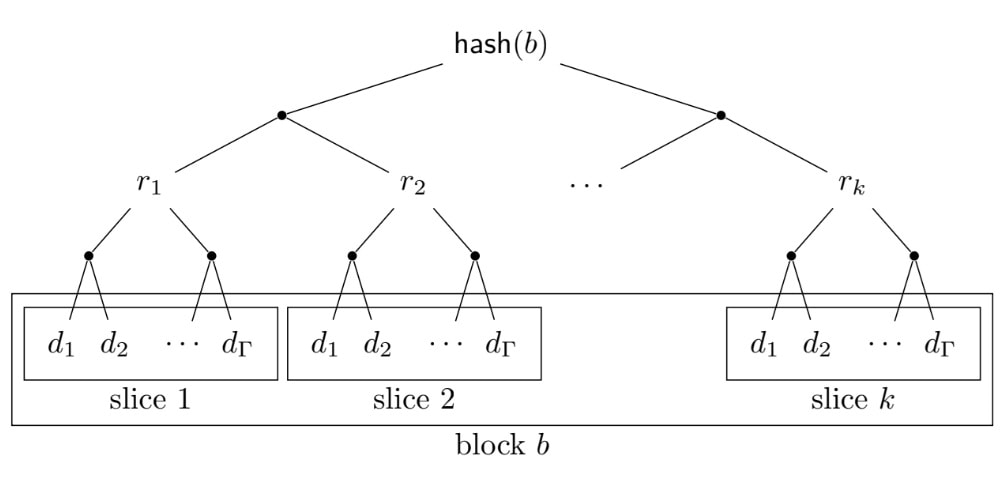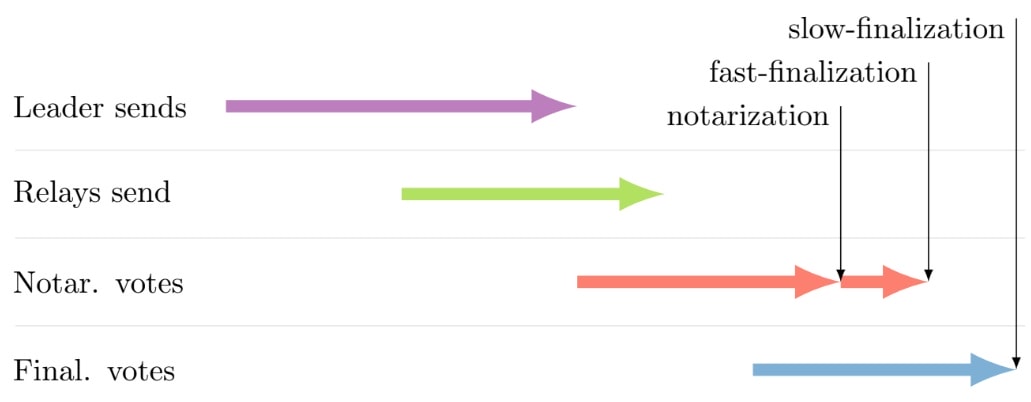The most important update in the protocol Solara,, Alpenglowhas just been announced during the event Accelerate 2025. Organized by Solana Foundation from May 18 to 23, 2025 in New York, he brought together many personalities from Fintech and Crypto industry.
Roger Wattenhoferfounder ofAnza Research and professor at the University of Zurich, introduced this new consensus mechanismdeveloped with two of his students, Quentin Kniep And Kobi Sliwinski. Alpenglow will allow Solana to considerably improve its scalability and its overall performance.
Solana gets rid of proof of history and Tower BFT
Solana has greatly innovated in the universe of blockchains with its horror systemcalled the proof of historyand its consensus mechanism, Tower BFT. As a reminder, proof of history, conceptualized by Anatoly Yakovenkoallows the network to agree on the flow of time between two events. Tower BFT, meanwhile, is the current Solana consensus algorithm, which takes advantage of the Proof of History.
The combination of these elements and other innovations such as Turbine,, Sealevel Or Gulf Stream allow Solana to ensure a high speed transactions. Despite difficult beginnings, marked by untimely blockchain stops, these technologies have ensured its success. The fast and inexpensive platform is now widely used in the decentralized finance. In addition, it is now the most used to emit the famous same.
Melting Anza ResearchRoger Wattenhofer and his team want to considerably improve Solana’s performance, but also its safety. They first got down to design of a brand new consensus mechanism for networks in proof of stake.
Alpenglow, the new Solana consensus mechanism
With AlpenglowSolana says goodbye to many of the original components of the protocol. He is doomed to replace Tower BFT, based on proof of history. Turbine, the information dissemination of information within the network, will also be replaced by Rotoran improved version.
These changes will allow Solana to benefit from a scalability competing with web2 platforms in terms of responsiveness. There latency average between the creation of a block and its finalization should go from 12.8 seconds has 150 milliseconds.


Alpenglow relies on advanced research. He combines the data distribution by erasure coding the latest advances in consensus. It introduces major innovations:
- A voting system one or two laps resulting in an unprecedented finalization period;
- Its resilience called « 20+20 » which allows the protocol to operate effectively, even in difficult network conditions;
- A sampling strategy with low variance.
Overview of Alpenglow
Alpenglow is a new blockchain protocol in proof of stake that is based on two main components, Rotor And Votor.
Rotor is there optimized turbine versionthe protocol of Data dissemination current of Solana. Its particularity is to use the entire gang Available provided by nodes. This is what allows you to reach an asymptotically optimal flow.
On Solana, time is divided into slots. A knot called leader Chosen by a random function is responsible for building blocks for a fixed number of consecutive slots. It is therefore he who receives the new transactionswhether they are sent by users or other nodes.
The idea of the rotor algorithm is to disseminate the blocks in small pieces Using the gang band of all nodes. Once a block is built, a new leader begins to produce a new block. At the same time, each node ends up receiving the previous block and votes as to its validity.
If the block arrives in time and it is correct, the node votes for the block. If it arrives late, it is ignored (it means that the leader is not trustworthy or that the network is unstable). If a block is elected to the super-majority (80 % of stake Total network), the protocol produces a notarization certificate. The block will then be immediately finalized. Otherwise, it will be necessary to choose between notify the vote or ignore the block.
Detailed operation of Alpenglow
Structure of blocks: Shred, Slice, Block


Each slice (slice) has a hash root, which in turn constitutes the sheets of the second Merkle tree, whose root corresponds to hash block.
Rotor
Rotor is the Block diffusion protocol Alpenglow. The leader wishes to disseminate data (a block) to all the other nodes. This procedure must present a low latencyuse the bandwidth of the network in a balanced way and to be Resilient with transmission failures. The block must be produced and transmitted continuously, that is to say that the leader does not need to wait until the block is fully built.


A leader uses several rounds Rotor protocol to broadcast a block. Each round takes into account the independent transmission of a fragment (shred) Bloc. The leader transmits each fragment as soon as he is ready (pipeline production and transmission of blocks).
For each slice, the leader generates γ fragments of Reed-Solomon coding And built a Merkle tree on their hashers, then signs the root. The coding fragments include Merkle’s path as well as the signature of the root. Each fragment contains as much data and corresponding metadata as a Datagram UDP.
Erasure coding
THE corrective codes allow rebuild incomplete data from a number of fragments. The use of Reed-Solomon erasure coding Guaranteed that at the cost of an additional sending of data, the reception of γ fragments is enough to rebuild the tranche. Then, for an additional validity verification, a receiver generates the missing fragments (up to γ - γ). For each slice, the leader sends each fragment directly to the corresponding node, selected as fragment relay.
Each relay diffuse Then his fragment to all the nodes that still need it, that is to say to all nodes except to the leader and to himself, by decreasing order of stake. As a minor optimization, all fragment relays first send their fragment to the following leader. This slightly improves latency for the following leader, who most needs the block.
To allow receptors to check theauthenticity of each fragment individually, the leader builds a Merkle tree On all fragments of a slice. Each fragment then includes its path in the tree and the signature of the leader of the root of the tree.
When receiving the first fragment of a slice, a node checks the validity of Merkle path and signature of the leader, then stores the verified root. For any subsequent fragment, the receiver node only checks the validity of the Merkle path compared to the stored root.
Blokstor
Blokstor is the system that collects and stores the first block received via rotor for each temporal location (slot). He can also execute the compensation procedureto recover another block and store it. If a block is finalized, Blokstor must collect and store only this block in the given location.
Votes and certificates
If a leader obtains at least 80 % Votes for its block, it is immediately finalized After a tour. We then talk about rapid finalization. However, as soon as a knot notes that 60 % Votes for a block are positive, he proceeds to a second round. If the second vote again brings together the quorum of 60 % For a block, it is finalized. On the other hand, if a sufficient number of votes considers the block late, the proposal for initiation of the block is ignored (leap).
THE Pool
Each node manages a data structure called Pool. In this pool, each node memorizes all the votes and certificates of each time period (slot).
Votor: Notarier and finalize the blocks on Alpenglow


Votor algorithm aims to notarier and finalize The blocks. The finalized blocks constitute a single chain of parent references. The protocol guarantees that, for each location:
- Either a jump certificate is created;
- Either a block B is notarized (or a Block B of emergency), so that all the ancestors of B are also notarial.
Condition thresholds guarantee that a malicious leader cannot prevent the creation of certificates. If many correct nodes have produced notarization votes for the same block B, all the other correct nodes will make emergency votes for b. Otherwise, all the correct nodes will broadcast aid votes.
A knot can finalize a block as soon as it observes enough notarization votes (80 %) Produced by other nodes immediately after receiving a block. However, a lower participation threshold is required (60 %) to create a Notarization certificate. The knot will then send the finalization vote. Consequently, the blocks are finalized after a voting round among the nodes holding 80 % of the participation, or two towers among the nodes holding 60 % of the participation.
In conclusion
Alpenglow presents performance much higher to Tower BFT in terms of management of the bandwidth and latency. The results of the tests carried out by Anza Research in Zurich are available in his whitepaper.
By passing under the barrier of 200 milliseconds For the finalization of blocks, developers will be able to imagine new applications on Solana. The idea is to get closer to real -time execution.
For the moment, Alpenglow’s implementation dates have not been announced. The team provides for a deployment in End of year 2025 If the tests go well. Anglophones can view Alpenglow’s presentation at the Scale Or Die – Accelerate 2025 conference on YouTube: